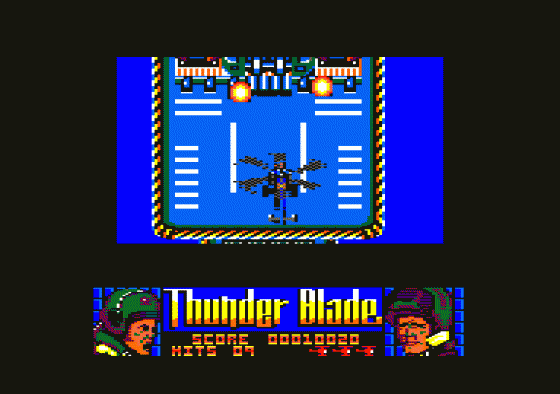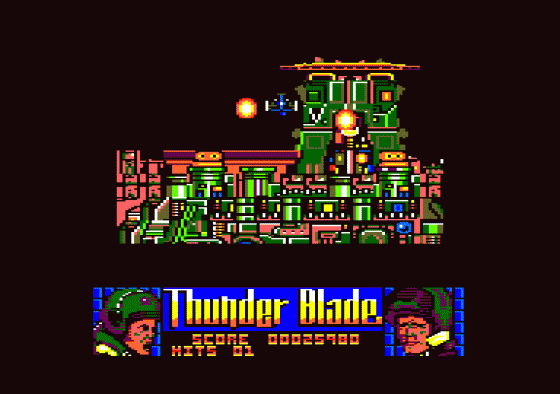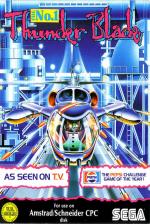
Amstrad Computer User
 1st February 1989
1st February 1989
Categories: Review: Software
Publisher: U. S. Gold
Machine: Amstrad CPC464
Published in Amstrad Computer User #51
Thunder Blade
After last year's fiasco with OutRun, when US Gold made a mint out of a naff game, I was prepared for the worst when I popped in the disc labelled Thunder Blade.
My suspicions were highlighted by having spent a small fortune shovelling shekels into the arcade version, which uses two 68010 processors and more homebrew chippery than McDonalds has ever seen.
I was amazed. The Tiertex conversion is stupendous. To be able to zoom in on the ground by climbing and diving is something very special.

Japanese companies have spent billions of yen designing chips to do the job, and the Frenchmen from Tiertex have done it in software on the CPC!
To zoom in needs multiplication routines, something computers are quite slow at. As a result the CPC chugs a little. The maths gets heavier and the programming more impressive when the view changes to an over-the-shoulder shot. Tower blocks loom larger and larger as the action hots up...
A dedicated team of programmers spending months toiling over an assembler always has to be complemented by someone spending fifteen minutes thinking up a plot. According to the blurb, your country is being overrun by rebel forces led by a General Swindells.

The government is in danger of being overthrown and USGHO have called upon you and the Thunder Blade helicopter the ultimate flying machine - to defeat the enemy, taking on land, sea and air forces.
The battle is not quite singlehanded as, you have five lives and incredible firepower - a rapid fire chain cannon and an inexhaustible supply of missiles.
The flight controls are, erm, interesting. Waggling the joystick left or right banks the helicopter.

Pushing forward causes the chopper to dive, pulling back makes it rise. If you hold down Fire, forward accelerates, while yanking the stick back makes Thunder Blade slow.
Fire also has to double as the trigger to unleash kilotonnes of machine gun and missile fire.
The result of the extensive use of the Fire button is that to move you have to shoot. While you are diving you cannot shoot, but this is a better compromise than using extra keyboard controls.

Master the controls and you can take on the greeblies. To start with, they take the form of tanks, which have a penchant for taking you out of the sky. The odd AH-Sparrow attack helicopter comes for you, and there's an F14 stolen from AfterBurner.
Later levels have you doing battle at sea - the movement of the ship being used as an effective excuse for slow scrolling. Later still you fly into a canyon where there is no excuse for the exceptionally slow scrolling - no excuse other than Thunder Blade's attempt to squeeze more out of a Z80 than it can hope to deliver.
Throughout the game you have a choice between flying low to score lots of points, or flying high where it is easy to dodge enemy flak but not much chance of fighting back. This makes the early screens seem easy and a little dull.. unless you go in low with carbines blazing.

The play area has been shrunk to about a quarter of the screen size, and still the game slows down.
When you are in the thick of things the small screen does not seem to matter, but the sloth does.
Thunder Blade is an impressive programming achievement. It is also a very good game. But it proves that by trying too hard you can lose playability.
Other Reviews Of Thunder Blade For The Amstrad CPC464
Thunder Blade (US Gold)
A review by Gary Barrett (Amstrad Action)



